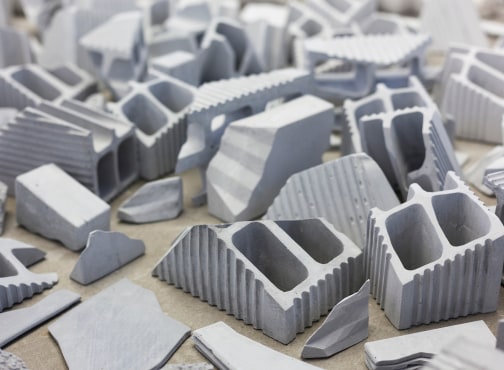
The present era, characterized by climate disasters occurring simultaneously worldwide - rising temperatures and sea-levels, frequent floods and coastal inundation, ongoing droughts and desertification due to water scarcity, massive storms and typhoons - is commonly referred to as the era of climate crisis. The climate crisis era could therefore be defined as a time when carbon determines the survival probability of all life on Earth and when every human action must be retroactively linked to the issue of carbon emissions. In this context, how is the climate crisis presented and perceived? If we reflect on how such things are visualized, climate issues are perceived in the realm of subjective sensory experiences such as weather or natural phenomena, or symbolically through scientific indicators converted into measurements of atmospheric carbon dioxide levels and global temperature changes. This indicates that no one, regardless of their expertise, has been able to capture or communicate adequately a sense of the true immensity of a future global temperature rise of 1.5 degrees.
A crucial point regarding this notion that the climate crisis has not, as yet, been properly represented lies in its implication of the incompetence of art and that the artistic imagination of our time likewise faces a crisis. Several organizations have been established around the United Kingdom, charged with attempting to apply environmental policies for carbon neutrality to exhibition themes, methodologies and even overall museum operations. Despite these efforts, debate on sustainability within the art museum sector has failed to contribute to changes in public perception, their political attitude instead drawing criticism, with museums accused of having become products of the spectacle and complicit in the chaos caused by the climate crisis.
However, in contrast to the situation facing museums, this failure of representation has become an extremely favorable condition enabling contemporary capitalism to produce new commodity values. This can easily be discerned by paying attention to how the climate crisis is represented in the media today, as evidenced in campaign advertisements sensationalizing the catastrophic affects of the climate crisis, such as the burning Amazon, the melting Arctic, the destruction of animal habitats, famine and the plight of refugees, while appealing to individual moral responsibility; in corporate promotions diluted with “good” forms of capital for the public, promoting a transition to clean, renewable energy, the decarbonization of production processes, and the consumption of eco-friendly products like electric cars; and in commercials for supposedly green financial products supporting government and corporate environmental ethics, including emissions trading systems involving pollution permits, and weather derivatives.
------
Iranian artist Nazgol Ansarinia deals with themes related to the architectural environment, the consequences of reckless development, the distinction between public and private spaces, and the scars and traces left behind in destroyed places, focusing on the city of Tehran.
Traditionally, in Iran, swimming pools were common in residential spaces, primarily for the purposes of maintaining humidity, but in recent times many of these pools remain empty due to a combination of widening wealth disparities and water scarcity caused by climate change. Ansarinia sees these empty swimming pools as repositories of past memories, which also project the collective desires of local communities, imagining an impossible future in which they might be filled once again. In the past few years, Iran has faced continuing droughts and power shortages, transforming water from an amorphous element that once evoked nostalgia into a reminder of resource crisis and economic hardship.
Dissolving Substances (2020), a 2-channel video, captures the slow weathering of an empty swimming pool, depicting the progression of the pool drying out in an abstract yet architectural way. One channel features the cracked old pool, which resembles a kind of "blue room" and evokes both receding plains due to rising sea levels and the parched earth of lands affected by drought, while the other evokes unpredictability and the unfulfilled, anxious nature of life, as it simulates the continuous ebb and flow of waves. This is despite the fact that both channels portray scenes of the same empty pool.
The background music, as if absorbing the blue screens and soaking up the flowing water, amplifies the precariousness and melancholia of the life with which we are now faced.